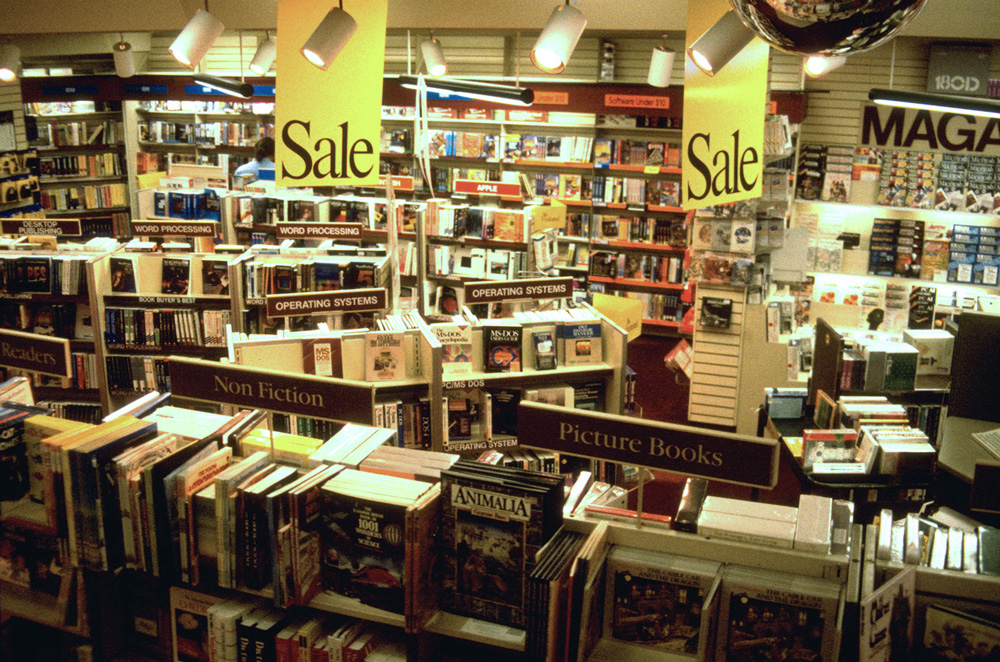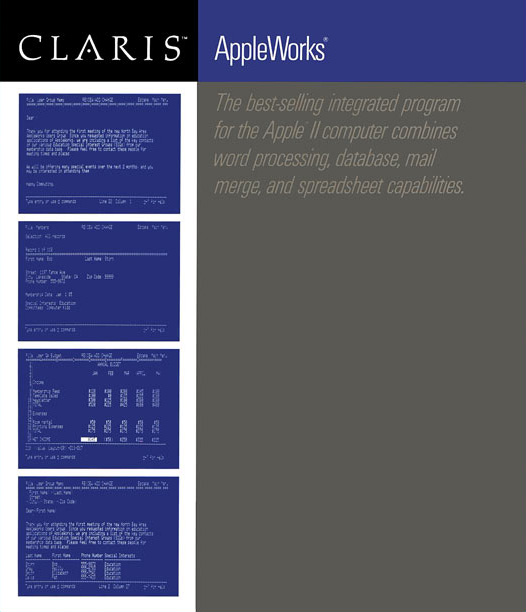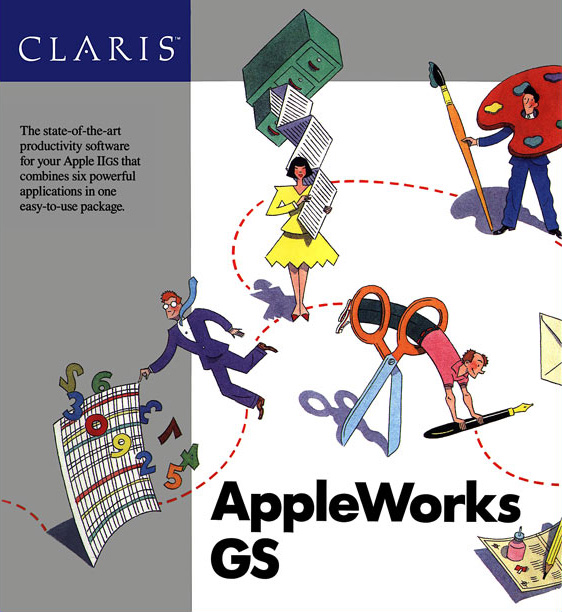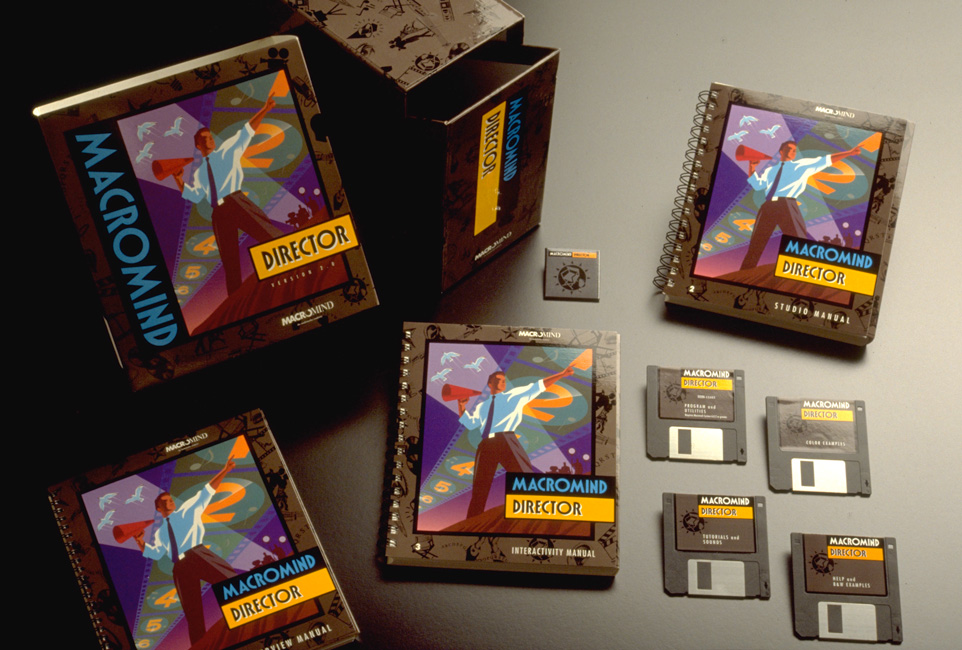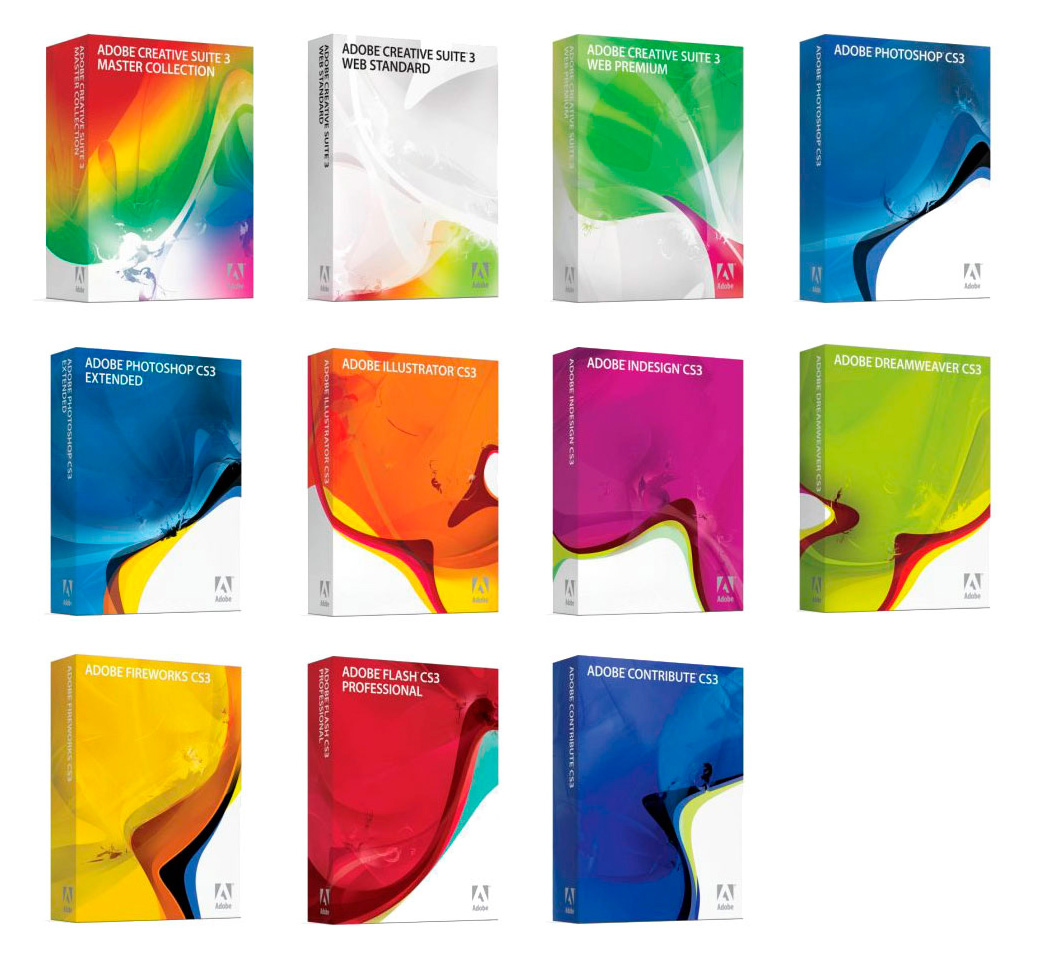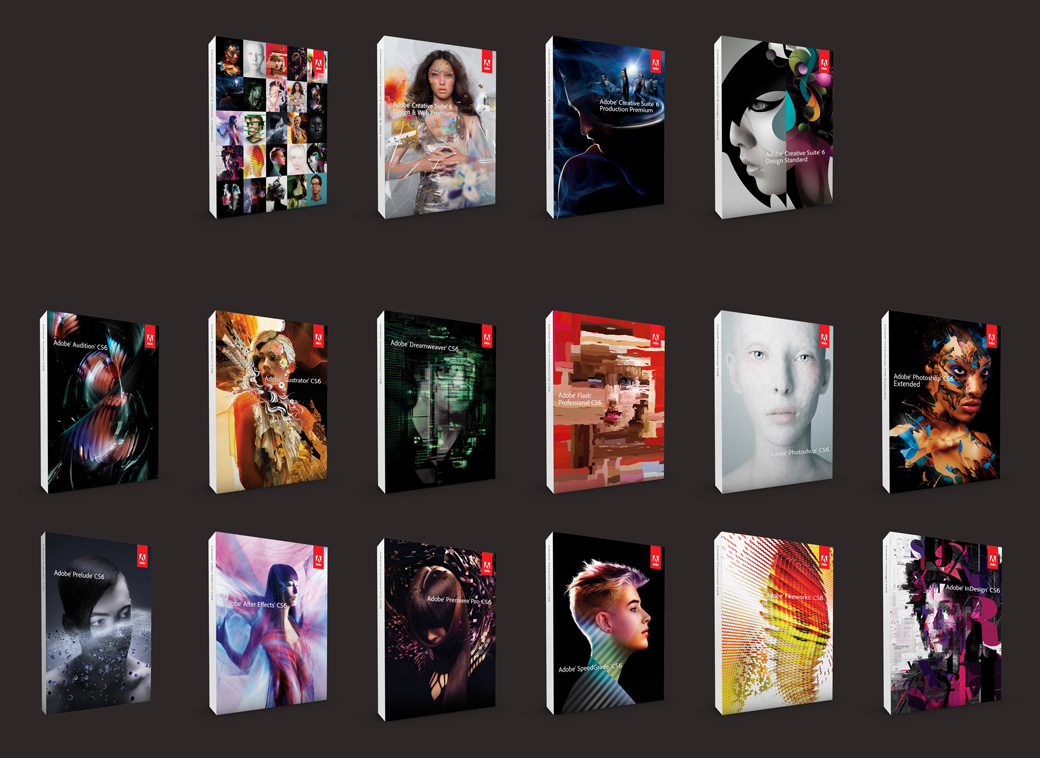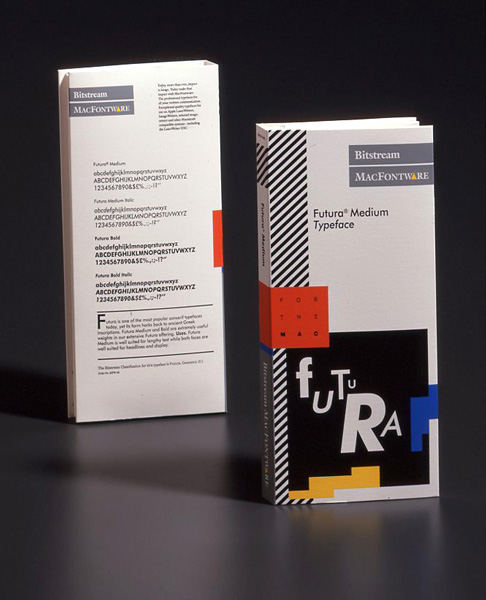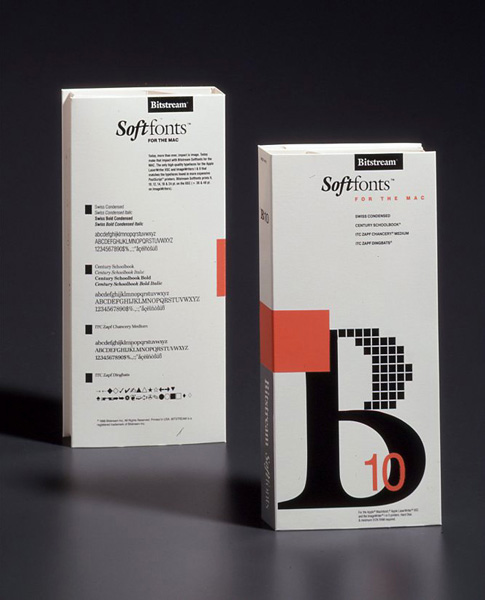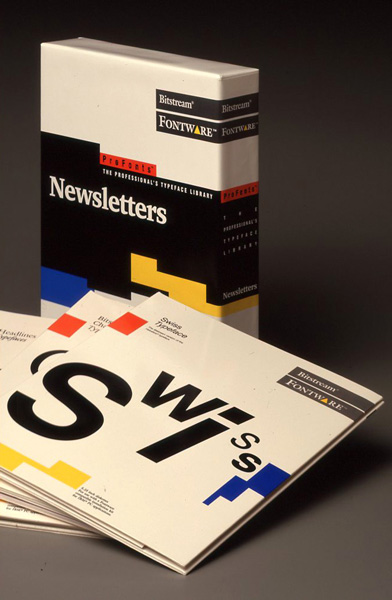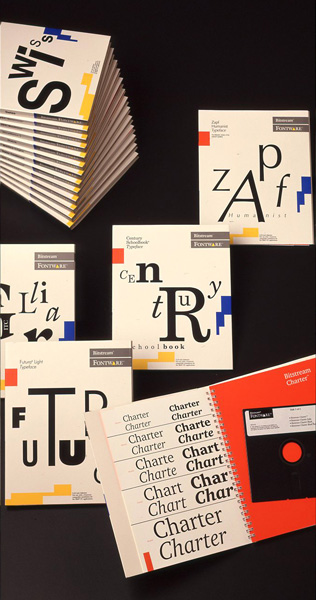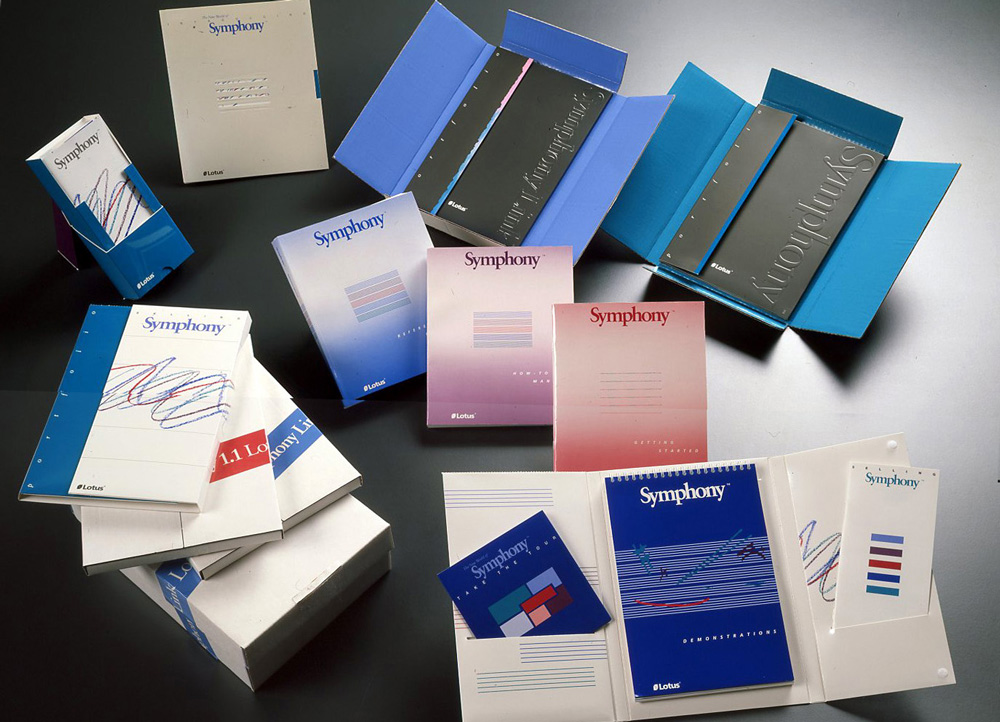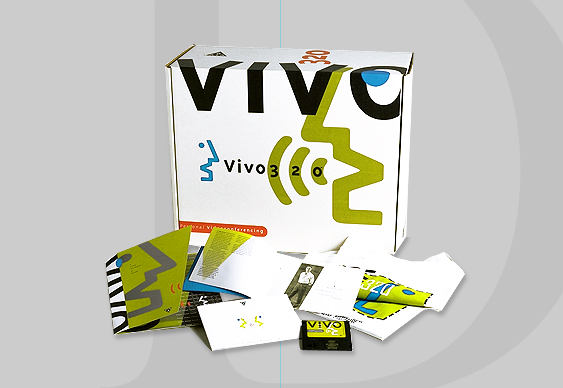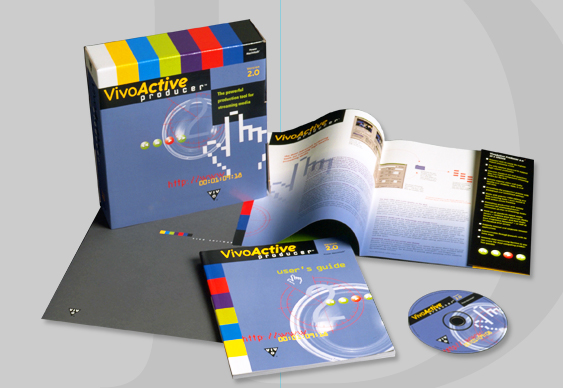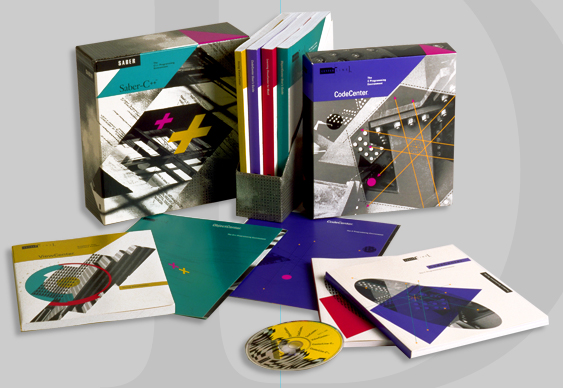Software is real. For all indications we are otherwise given, computer sofware arises through the efforts of organisations and management, the orchestration of many hands typing, many neurons absorbing the productive energies of human metabolism, and many hours spent being tutored, or self-tutoring, in the arts of computation. Equally real, actual, and material are the effects of these algorithmic parcels, the labours of distribution and advertising, commerce and marketing and marketeering that help get software into the soiled hands and plebeian hard drives of “users”.
We were perhaps never more aware of the efforts and energies that go into software products and services than when these were things that were purchased in storefronts with window dressings, from vendors and salespeople with geo-tractable jobs. Early versions of these things were over-sized, mostly air-filled cardboard boxes, a physical-asynchronous interface between computer user and software producer. As capitalism liquidises itself, will we come to miss the earnestness of these anachronistic, over-the-counter purchases? For software and its distribution, the cycle of design, production, packaging, physical distribution and consummation has now almost entirely disappeared itself behind a curtain of “apps” and “app stores”. Almost.
WINDOWS
WINDOWS is an invitational installation in the front window of the COMPUTER + SOFTWARE store in Basel. Moritz Greiner-Petter and Jamie Allen asked a set of 16 artists and friends to design a software box for our contemporary digital era. Participating artists include, alphabetically by first name: Aram Bartholl, Benoît Verjat, Bernhard Garnicnig, Ciara Phillips, Constant Dullaart, Evan Roth, Geraldine Juárez, Ishac Bertran, Jan Robert Leegte, Peter Moosgaard, Phillip Stearns, Pussykrew, Rosa Menkman, Sebastian Schmieg, Suzanne Treister, Windows93.
The exhibition opens on June 16th, 2017 and runs through the end of that month. An exhibition opening, performance and lecture are taking place on June 16th, in collaboration with Plattfon Stampa, a local record store that offers music and media that falls outside of the mainstream, online at www.plattfon.ch.
In 1984, the first software retail store opened in Basel, Switzerland. Now called “COMPUTER + SOFTWARE”, it has offered competent advice and high quality products for well over thirty years. Offering computer software and hardware, the shop also still offers hard-to-find accessories and legacy products, maintaining a product range that dates to the early days of personal computing culture. The location in the area of Basel that baseldeutsch renders us as Glaibasel, or “Little Basel”, is a living archive of disappearing cultures and artefacts of software production, software labour and the material exchange these require and allow. Online, COMPUTER + SOFTWARE maintains a spartan presence at www.computer-software.ch.
Boxes of Software
There was a time when bandwidth and a lineage of publishing practices meant that in order to purchase software, you went to a bookstore or an office supply shop. There, you would find a helpful clerk — a human being — who would attempt to match your verbally articulated needs with an appropriate application, software product. In ‘shopping around’ in this way, the user or consumer was connected, albeit indirectly, with the industry and labour that lies behind software. Software is distributed, but only via the activities of human beings, and the physical machines and energetic capital they make and activate. Someone makes all this stuff, all these applications, all these tools for reading, accounting, writing, emailing, authoring, tracking, creating.
As there are no longer disks or hardware to buy, sell, rent, borrow or exchange anymore — the meatspace of moving bodies and civic engagements in streets, houses, bars, street corners and public spaces finds less and less a part in the culture of software which floats “above it,” where we all, erroneously imagine ‘the cloud’ to reside. Artists like Microradio pioneer Tetsuo Kogawa, and his purposefully short-distance radio broadcast projects proved that technologies of distribution can indeed be used to bring people together. The software box is a similar locus — a boundary object that presences what is exchanged when people put their energies and ideas into the digital language of code. Like microradio is a good excuse for a radio party, software boxes are a good excuse for a software party. They are the demonstration-objects of a domesticated demo-scene, the everyday pedestrian packaging of personal computer clubs.
In cultures of contemporary creative production (‘digital art’ and ‘internet art’, as well as their ‘post-’ variants) our links to those that produce platforms and tools of creative production have largely been cleaved. Our ability to maintain an awareness, as artists and audiences, of the industrious individuals and environments which subtend the aesthetic and conceptual potentials of personal, digital, networked and mobile computation is subverted by the ‘one-click’ app download, and the instantaneous, continuous update. ‘Appification’, and with it the economics of ‘plat-forming’ bring about not only a fragmentation of labour and function, but also a flattening and homogenization of all production, artistic creativity included. The app icon as the ‘boiled down’ software box of today is one obvious sign of this harmonising aesthetic monoculture. Artistic interest in the ‘app’ as a reformatting of creative practice has been rendered explicit by projects such as The Imaginary App by Paul D. Miller and Svitlana Matviyenko. As well, post-digital and post-Internet art practices show active interest in the perfidy of materials as exhibition-oriented manifestations of online, digital and software ‘objects’. WINDOWS develops a design-historical connection to the precursors and productive industries of software. In creating comparative disjunctions between current and prior software ‘packaging,’ the product-object aspects of software are brought to the fore. Software, computing platforms, media communications are drawn out of the cloud, and back into the box.
The hours of work, and billions of clicks and keytaps, that go into the software that underlies digital culture is disappeared when the ‘product’ is obfuscated beneath a myriad of click-purchased, incremental updates, and service-signups. We no longer exchange capital for labour, we ‘sign up’ for a lifetime of potential associations and bank account seepage. The Adobe Creative Suite (a set of tools through which most art, design and media production flows inevitably seep these days) is no longer available as a single license, but requires subscription and membership — a forced buy-in to software development and update cycle, an ideology, that is as abstract as it is infinite. Meanwhile, behind this system lay an army of engineers and programmers, computer scientists, designers, developers and advertisers. This is to say nothing of the computers, servers and routers machines that also ‘labour’ to host and distribute these codebases, and with which we also now have life-long relations but very little conscious awareness or contact. The shopfront is a login screen, and the economies of digitality lay with the micro-payment and the auto-renewed bank withdrawal; a kind of anti-economy, where exchange itself disappears beneath a cloudy haze; nobody knows what they are working for, or paying for. We buy gas, and we purchase milk… but we “sign up” for software.
There have been many attempts, most cumbersome, to return the material to software systems and their use — from the ‘license dongle’ which for a brief period in the 1990s was what granted ‘keyed’ access to expensive software systems; to the numerous attempts by creative coders and digital designers to ‘render media physical,’ by printing out sound files and physically rendering and extruding film frames. In each of these cases, the physical world interrupts (either intentionally or unintentionally) what would otherwise (dis)appear as seamless economic flow. Fragments of functionality and liquid labour vascularise exchange into the unassailable mist of atomised capital.
